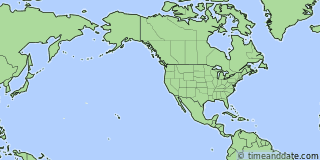1945年9月30日 (日), 2時00分
In small parts of US Minor Outlying Islands
Note: Only some parts of US Minor Outlying Islands used DST in 1933.
4月30日 (日)
Forward 1 hour
1933年4月30日 (日) - Daylight Saving Time Started
When local standard time was about to reach
1933年4月30日日曜日, 2時00分00秒 clocks were turned forward 1 hour to
1933年4月30日日曜日, 3時00分00秒 local daylight time instead.
Sunrise and sunset were about 1 hour later on 1933年4月30日 (日) than the day before. There was more light in the evening and less light in the morning.
Also called Spring Forward, Summer Time, and Daylight Savings Time.
5月21日 (日)
Back 1 hour
1933年5月21日 (日) - Daylight Saving Time Ended
When local daylight time was about to reach
1933年5月21日日曜日, 12時00分00秒 clocks were turned backward 1 hour to
1933年5月21日日曜日, 11時00分00秒 local standard time instead.
Sunrise and sunset were about 1 hour earlier on 1933年5月21日 (日) than the day before. There was more light in the morning and less light in the evening.
Also called Fall Back and Winter Time.
Which Unincorporated Territories use Daylight Saving Time in 1933

Areas in US Minor Outlying Islands on standard time all of 1933
DST in Locations in US Minor Outlying Islands in 1933 (7 Locations) | |||||
|---|---|---|---|---|---|
| Baker Island | No DST | Johnston Atoll | No DST | Wake Island | No DST |
| Howland Island | No DST | Midway | No DST | ||
| Jarvis Island | No DST | Palmyra Atoll | 4月30日 (日) – 5月21日 (日) | ||
Daylight Saving Time History in US Minor Outlying Islands
- US Minor Outlying Islands last observed Daylight Saving Time in 1956.
- US Minor Outlying Islands has observed DST for 6 years between 1933 and 1956 (DST in at least one location).
- See Worldwide DST Statistics
